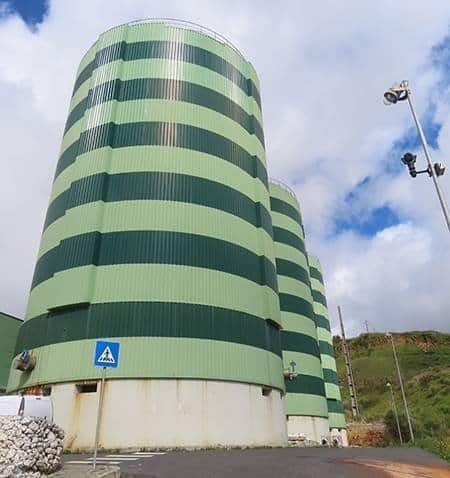Biomass
Putzmeister and Tratolixo: energy generation and composting through urban waste

, Tratolixo's waste plant in Abrunheira , near Lisbon, has managed the waste of almost one million inhabitants of the western area of the city, specifically the municipalities of Cascais, Oeiras, Mafra and Sintra. This plant is the largest in Portugal, with a processing capacity of 75,000 t per year that produces electricity and composting through anaerobic digestion.
How does the process work?
The plant receives urban waste that, using a conveyor belt, is added to the Putzmeister feeding hoppers designed especially for the client. Just below are the THS 2052 MX mixing screws and the KOS 1480 double piston pumps that pump the waste, introducing it into the three digesters with a capacity of 35,000 t/year each, where the fermentation process that will generate methane gas is carried out. .
At the same time, part of the waste fermented in the digester is recirculated by other Putzmeister KOS 1070 piston pumps to mix with more waste and return to the digester . The methane gas generated in the process is stored in a gasometer in the same plant or is transformed into electrical energy that is introduced directly into the grid.
Everything is used in Tratolixo, the waste from the digesters is analyzed every day and when it is considered that it no longer meets the properties to produce gas, it is transformed into compost for agriculture.
Likewise, the wastewater is taken to a treatment plant to re-enter the plant, as it is not suitable for human consumption.
| Material | Organic waste from urban areas |
| Density | 35% solid residue |
| pH | 6 – 8 |
| Foreign body size | <60mm |
| Feed pumping (max.) | 42 m3/h at 5 bar |
| Recirculation pumping (max.) | 20 m3/h at 5 bar |
| Feeding operation | 16 hours/day from Monday to Saturday (in two 8-hour shifts) |
| Recirculation operation | 16 hours/day every day (in two 8-hour shifts) |
Putzmeister technology and Maquinter service, keys to success
In this type of projects in which biomass, biological waste and food waste are pumped, it is vitally important to have pumps and supply lines that are leak-proof and free of failures, since everything that disturbs transport flow can lead to obstructions or blockages.
Putzmeister has vast experience in the transportation of biomass since the late 1980s. Tratolixo has already trusted Putzmeister technology in two other lines of this same plant since its inception in 2012, and now in 2024, due to an increase of production, expanded to a third line.
Specifically, at Tratolixo's Abrunheira plant three KOS 1480 P piston pumps work in the feeding part and three of the 1070 model in the recirculation part . The KOS models consist of a robust hopper for feeding the material, two reinforced supply cylinders with a piston each and the so-called S transfer tube that carries out the change using two powerful piston cylinders, so the pumping of bodies Foreign matter and dry or viscous material is not a problem.
For its operation, Tratolixo has three HA 55 E hydraulic groups with open hydraulic circuit and electric drive, and a SEP 55 P control panel . In addition, the lines also have three material receiving hoppers designed by Putzmeister according to the needs of this plant and three pieces of equipment
Putzmeister THS 2052 MX that intensively knead the initial mixture using endless screws so that the pumps can assimilate the waste more easily.
Although Putzmeister equipment has been designed to suffer low wear, this is inevitable and Tratolixo relies on the Maquinter team, Putzmeister distributor in Portugal, for its maintenance and supply of spare parts. Without a doubt, a decisive factor when it comes to trusting Putzmeister technology again.
Every year, Maquinter's team of technicians travels to the Abrunheira plant to carry out exhaustive preventive maintenance, key to the long life of the system. And not only that, but Maquinter also had a very important role in the entire technical advisory process carried out for the implementation of the system, lending its technical knowledge to the engineering that the project requires.

